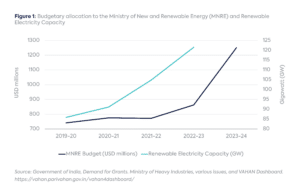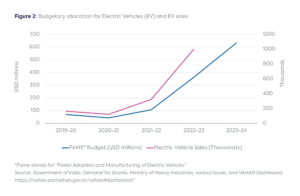This website uses cookies as well as similar tools and technologies to understand visitors’ experiences. By continuing to use this website, you consent to Columbia University’s usage of cookies and similar technologies, in accordance with the Columbia University Website Cookie Notice.
Energy Explained
Insights from the Center on Global Energy Policy
Unpacking India’s Green Growth Budget
The annual Union Budget of India[1] presented by the central government to the Indian Parliament lays downs its economic and policy priorities for the year. The budget statement for the financial year 2023-24 presented at the beginning of this February has identified inclusive development and green growth among its seven key priorities.[2] To promote the growth of green energy sources, there has been a substantial increase in the budgetary allocation for a number of initiatives. This increase in government expenditure towards green initiatives is unprecedented and signals a significant step up in India’s efforts towards decarbonizing its economy. This post identifies the key components of this green growth budget and discusses their significance.
Financing a Green Energy Transition
The Budget has framed its green growth initiatives within the developmental paradigm of the Lifestyle for Environment (LiFE)[3] and Panchamrit[4] that India has championed as part of its climate strategy. Together, these propose a sustainable development strategy to achieve “decoupling economic growth and environmental degradation”. The focus of these efforts in the budget is on a faster ramp up of nonfossil electricity, notably solar and hydrogen; decarbonization of the transport sector; and using green bonds to finance this new infrastructure.
Nonfossil Electricity
The budgetary allocation towards increased renewable electricity has increased by nearly 50 percent over the previous year.[5] Even the relatively modest allocations in earlier years has resulted in a rapid growth of renewable capacity in the country (Figure 1). Once deployed, the substantial increase in budgetary allocation this year would support a much faster ramp up. Within this, the budget allocation for the solar power is $644.15 million, which is a 54 percent increase as compared to the last year’s allocation while that for the wind power sector increased by 15.6 percent.[6] In addition, the budgetary allocation to the two nuclear electricity generation companies has also increased by a substantial 42 percent.[7]
In addition, grid integration for new renewable energy projects proposed to be developed in the sparsely populated high-altitude desert in the north of the country, is being provided partial budgetary support. The government had previously announced a major initiative to develop 23 gigawatts (GW) of Ultra Mega Solar PV Projects in Ladakh.[8] This budget provides funding of $1 billion for building the transmission system to integrate 13 GW of this into the national grid. Among other notable initiatives, Battery Energy Storage Systems with capacity of 4 GW hours can now avail of Viability Gap Funding[9] and a scheme for pumped hydro storage will be formulated.[10] The largest allocation for energy transition initiatives is just over $4.2 billion in 2023-24[11] bucketed with the Ministry of Petroleum and Natural Gas. However, it is difficult to determine its allocation between the various initiatives of the Ministry in 2023-24.[12]
National Hydrogen Mission
India has launched a National Hydrogen Mission with an objective of producing 5 million tonnes of green hydrogen by 2030 to replace fossil fuels.[13] The focus of the Mission is to partially replace natural gas use in urban areas by blending green hydrogen with natural gas in city gas distribution networks; using hydrogen-based synthetic fuels in the transport sector; and replacing fossil fuels in hard to abate sectors such as steel. For the first time, a budgetary allocation has been provided for the National Green Hydrogen Mission, $36 million dollars for 2023-24.[14] While this is notable, it is still modest compared to hydrogen programs in other countries.[15] The Hydrogen Mission document and the budget speech indicate an allocation of $2.4 billion for the Mission though this amount is likely to be disbursed over several years.[16]
Electric Mobility
To promote electric mobility, the budget has a number of proposals. India’s flagship policy ‘Faster Adoption and Manufacturing of Electric Vehicles’ (FAME) provides subsidies for purchasing electric vehicles (EVs).[17] This budget nearly doubles the allocation for this scheme to over $600 million over the previous year.[18] Given how quickly the adoption of EVs has grown in India with increased allocation for FAME in the past (Figure 2), this increase promises to deepen the penetration of EVs even further this year.
To encourage the development of a domestic EV manufacturing industry, import duties have been removed on equipment to manufacture of lithium-ion batteries for EVs.[19] In addition, a simplification of the import taxes structure would result in a reduction of the customs duty rates on imported batteries from 21 percent to 13 percent reducing the upfront cost of EVs. Another key move to reduce the share of fossil fuel vehicles used by government agencies is the continuation of the policy proposed in the 2021-22 budget[20] of the scrapping of government vehicles older than 15 years.[21]
A significant outlay of nearly $1 billion for electrification of the Indian Railways is also proposed.[22] Indian Railways have set a target of net-zero carbon emissions by 2030, which includes 100 percent electrification of its broad gauge network.[23] Broad gauge accounts for nearly all of the railway network in India[24] and 82 percent of this had already been electrified by November 2022.[25]
Sovereign Green Fund
A number of green initiatives in this budget have been allocated funds from the recently-issued Sovereign Green Fund. For instance, the allocation for the National Hydrogen Mission and the grid connected solar and wind projects are to be financed by the Sovereign Green Fund.[26] The railways initiatives to manufacture energy efficient locomotives and the execution of urban metro railway projects are also to be paid for by this fund.[27],[28] The National Mission for a Green India to protect India’s forest cover is also be to be funded similarly.[29] Details of how this fund will be financed are still awaited though. The Sovereign Green Bonds that the government has proposed for the current financial year are likely to be a key source here.[30]
Delivering on Green Growth
The increased allocation for the development of green infrastructure, especially in electricity and transportation, should accelerate progress toward sustainable development epitomized in LiFE and Panchamrit. The budget is reinforcing year-on-year support for green initiatives with increasing allocation for key activities such as renewable electricity capacity growth and EVs sales. In addition, the budget has chosen to support long term infrastructure development such as the Ladakh transmission line and the newly formed National Hydrogen Mission. It will incentivize consumers and manufacturers with lower taxes for green products, such as EV batteries, while also enforcing the scrapping of old vehicles. In the end, a lot will come down to the timely execution of all these initiatives.
Notes
[1] https://164.100.47.194/our%20parliament/Budget%20in%20parliament.pdf.
[2] https://www.indiabudget.gov.in/doc/bh1.pdf.
[3] https://mopng.gov.in/files/uploads/Concept-Note—Mission-LiFE-(1).pdf.
[4] https://pib.gov.in/PressReleseDetail.aspx?PRID=1768712.
[5] https://www.indiabudget.gov.in/doc/eb/sbe71.pdf.
[6] Ibid.
[7] https://www.indiabudget.gov.in/doc/eb/sbe3.pdf.
[8] https://www.seci.co.in/data_archives/details?id=1147.
[9] The Viability Gap Funding Scheme of the Government of India provides financial support to infrastructure projects that are economically justified but fall marginally short of financial viability. https://www.pppinindia.gov.in/schemes-for-financial-support.
[10] https://www.indiabudget.gov.in/doc/budget_speech.docx.
[11] Ibid.
[12] https://www.indiabudget.gov.in/doc/eb/sbe76.pdf.
[13] https://mnre.gov.in/img/documents/uploads/file_f-1673581748609.pdf.
[14] https://www.indiabudget.gov.in/doc/eb/sbe71.pdf.
[15] https://iea.blob.core.windows.net/assets/e57fd1ee-aac7-494d-a351-f2a4024909b4/GlobalHydrogenReview2021.pdf.
[16] https://www.indiabudget.gov.in/doc/budget_speech.docx.
[17] https://fame2.heavyindustries.gov.in/.
[18] https://www.indiabudget.gov.in/doc/eb/sbe48.pdf.
[19] https://www.indiabudget.gov.in/doc/budget_speech.docx.
[20] https://www.indiabudget.gov.in/budget2021-22/doc/Budget_Speech.pdf.
[21] https://www.indiabudget.gov.in/doc/budget_speech.docx.
[22] https://www.indiabudget.gov.in/doc/eb/sbe85.pdf.
[23] https://pib.gov.in/PressReleasePage.aspx?PRID=1881387#:~:text=by%20PIB%20Delhi-,Indian%20Railways%20(IR)%20has%20envisioned%20to%20achieve%20net%20zero%20carbon,Gauge%20(BG)%20Railway%20network.
[24] https://indianrailways.gov.in/railwayboard/uploads/directorate/stat_econ/pdf/2022/Year%20Book%202020-21-English.pdf.
[25] https://twitter.com/BJP4India/status/1591759188195438592?s=20&t=eMeP1udJ3eLZwZIpXUDFgQ.
[26] https://www.indiabudget.gov.in/doc/eb/sbe71.pdf.
[27] https://www.indiabudget.gov.in/doc/eb/sbe85.pdf.
[28] https://www.indiabudget.gov.in/doc/eb/sbe60.pdf.
[29] https://www.indiabudget.gov.in/doc/eb/sbe28.pdf.
[30] https://loksabha.nic.in/Questions/QResult15.aspx?qref=46330&lsno=17.
More on Energy Explained Energy Explained
Energy and Climate Issues During the Trump Administration’s First 100 Days
President Donald Trump has made energy a clear focus for his second term in the White House. Having campaigned on an “America First” platform that highlighted domestic fossil-fuel growth, the reversal of climate policies and clean energy incentives advanced by the Biden administration, and substantial tariffs on key US trading partners, he declared an “energy emergency” on his first day in office.

Saudi Arabia’s Renewable Energy Initiatives and Their Geopolitical Implications
This Energy Explained post represents the research and views of the author. It does not necessarily represent the views of the Center on Global Energy Policy. The piece...
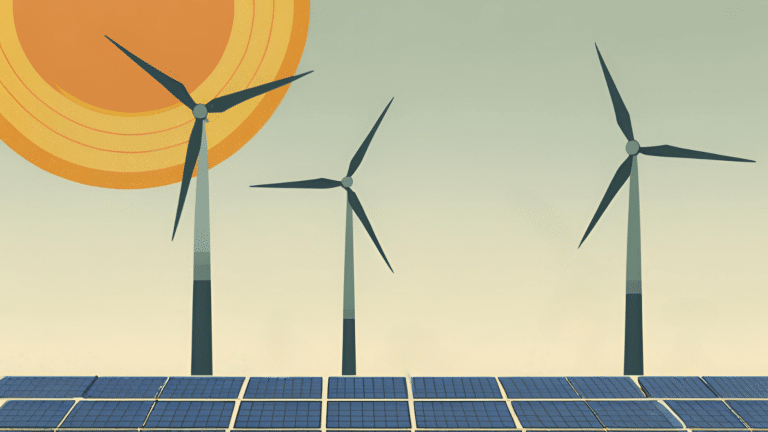
How the Next US President Could Shape Energy and Climate Policy
November’s election for president of the United States will have crucial implications for the nation’s and world’s energy and climate policies.
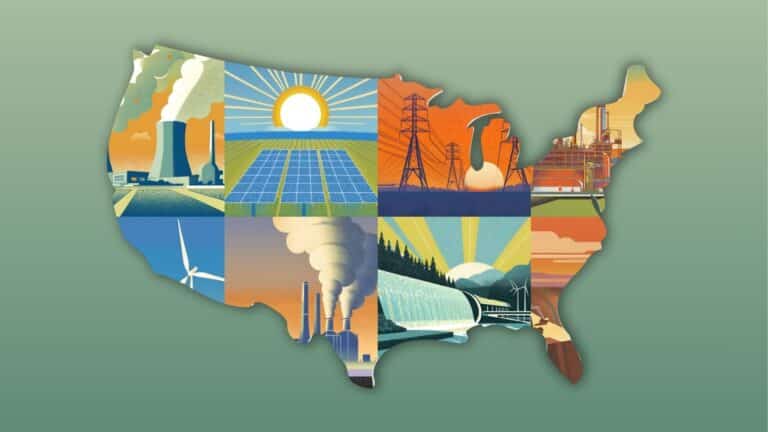
Falling Interest Rates Alone May Not Imminently Boost Investments in Renewable Energy
This Energy Explained post represents the research and views of the author. It does not necessarily represent the views of the Center on Global Energy Policy. The piece...

Relevant
Publications
The Potential Contribution of Enhanced Geothermal Systems to Future Power Supply: Roundtable Summary
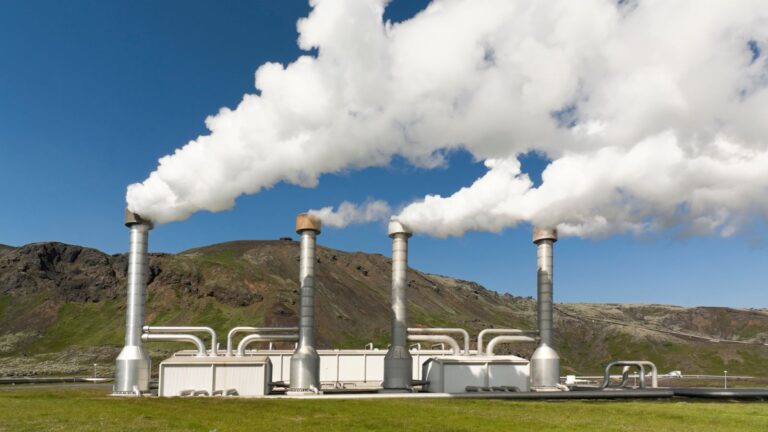
Analysis: China’s Push For Sustainability Disclosure Can Boost Green Growth
New government documents seek to align the climate disclosures of Chinese companies with national priorities and global best practices. Edmund Downie (Princeton U) and Erica Downs (Columbia U) write for Shuang Tan.




